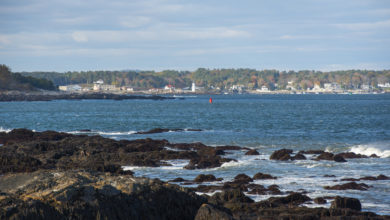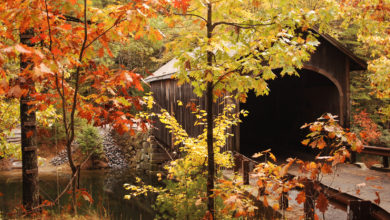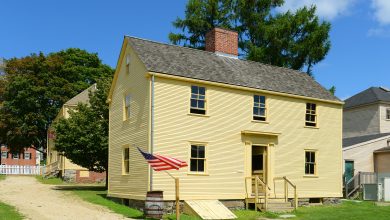
Named after the English county of Hampshire and one of the six states that are collectively known as New England, New Hampshire is often referred to as the Granite State thanks to its surplus of the sturdy stone. However, in order to mine more of what our ninth state has to offer, it is imperative to dig beyond the bedrock.
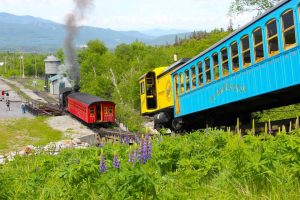
1. Mount Washington Cog Railway
In 1852, a man by the name of Sylvester Marsh hatched an idea to construct a railway up to the summit of Mt. Washington. His proposal was largely met with derision and skepticism, but it was Marsh who would have the last laugh when he achieved his goal in July of 1869. Today, the Mount Washington Cog Railway (aka “The Cog”) ferries guests up the mountain’s western slope in a three-hour round-trip ride featuring narration and offering sweeping views of the surrounding area.
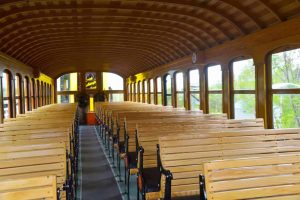
The ride itself takes about an hour each way, with a one-hour layover at the summit that allows for guests to explore the observatory, navigate short hiking trails, or engage in several photo ops, including beside the summit marker – which denotes this as the highest peak in the northeastern United States at 6,288 feet. An onsite post office also allows for a unique opportunity to send a postcard from the top of the mountain. The railway itself stretches approximately three miles and spans an elevation of over 3,000 feet. After making the descent, visitors can also visit the ground-level museum, which houses a variety of historical exhibits and interactive experiences, such as a train simulator that transforms passengers into virtual engineers of one of the diesel engines.

2. Moose Alley
One of the best, if not the best, spots in New England to spy wild moose can be found along a 12-mile stretch of highway that runs from Pittsburg, New Hampshire to the Canadian border. Known as Moose Alley, this section of Route 3 is flanked by the dense forests that are home to these majestic creatures, which can often be seen crossing the road or navigating their way through the thicket. For this reason, it is recommended that motorists proceed through the area with extreme caution. With an estimated moose population of upwards of 3,800 – the majority of which reside in this region – the area also plays host to the annual North Country Moose Festival, which is held just down the road in Colebrook. For nearly 30 years now, this event has taken place each Labor Day weekend and includes live music, wagon rides, and (of course) moose calling contests. As for that 12-mile stretch of Route 3, the optimal time of year to maximize viewing potential of the local wildlife – which have been known to weigh as much as 1,600 pounds and stand over 6-feet tall – is early spring and late fall at dawn or dusk.
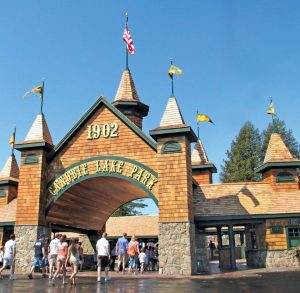
3. Canobie Lake Park
This Salem staple on the shores of Canobie Lake opened all the way back in 1902 as a trolley park, but has now evolved into a full-fledged amusement park complete with over 80 rides and attractions. Many of the rides date back to the early to mid-20th century, such as the Dodgems (bumper cars) and the Yankee Cannonball, the park’s oldest rollercoaster. The antique carousel – which boasts 46 different animal species – has been a mainstay at the park since 1903.
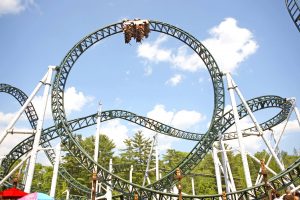
Aside from thrill rides and kid-friendly attractions, Canobie also features a bustling midway that offers a wide variety of games, from carnival classics such as balloon bust and ring toss to paintball shooting galleries and virtual reality experiences. A series of sports challenges also allow guests to display their athletic prowess by snapping off slap shots, sinking baskets, or making their pitch. Castaway Island is a recent addition, adding a water element to the park in the form of a tidal river (a combination wave pool and lazy river), waterslides, and a rain fortress – a giant jungle gym offering 180 different ways to get drenched. Canobie Lake Park is open from April through October and during the summer months features daily stage shows, including Extreme Science and the Vaudeville Magic Show.
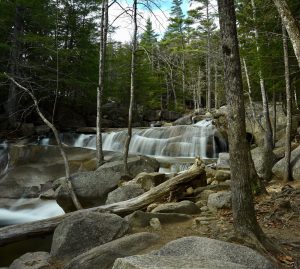
4. Diana’s Baths
Legend has it this series of waterfalls in Bartlett received its name as a nod to the Roman goddess of nature Diana. It is an appropriate moniker for this serene stretch of Lucy Brook, and a definite improvement over “Home of the Water Fairies”, which is what the falls were previously referred to as due to the erroneous belief that they were home to sinister water sprites. Located in White Mountain National Forest, this historic site features unique circular stone pools along the stream, with the series of falls cascading some 75 feet in total from beginning to end.

Back in the late 1800s, the water was utilized to power a sawmill constructed by the property’s owner at that time, George Lucy, for whom the babbling brook is named. The flow rate is largely dependent upon the time of year, with springtime being especially treacherous because of the winter runoff. The area can be accessed via a roughly half-mile hike along even terrain, with Cathedral Ledge and Whitehorse Ledge – two other popular hiking destinations – located in Echo Lake Park, which is just a few miles away.

5. Madame Sherri Forest
At the foothills of Wantastiquet Mountain, this roughly 500-acre park features several hiking trails that intersect with the larger Wantastiquet – Monadnock Trail, which connects the Connecticut River to Mount Monadnock. And though the natural scenery is quite beautiful, the most remarkable feature is the relic of a manmade structure that stands amidst the woodlands: The remains of Madame Sherri’s castle. A noted costume designer for Broadway productions, Madame Sherri commissioned the construction of a regal estate deep within the woods of Chesterfield, but after a fire ravaged the property in 1962 all that remains is a grand stone staircase. The ruins are a sight to behold in this setting, though visitors are strongly discouraged from climbing the stairs, both due to safety concerns as well as the preservation of this unique landmark.

